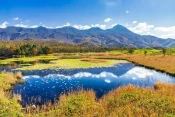Emergency Information in Hokkaido
Traveling to Hokkaido offers a unique experience with its beautiful landscapes, vibrant culture, and diverse attractions. However, it’s important to be prepared for unexpected situations that might arise during your trip. This guide provides essential information on how to handle emergencies, ensuring your safety and peace of mind while exploring this stunning region.
Emergency Numbers
In case of an emergency, knowing the right numbers to call is crucial. Here are the primary emergency numbers you should remember while in Hokkaido:
- Police (110)
- If you encounter a crime or need police assistance, dial 110. The police can help with various issues, including theft, assault, and lost items.
- Fire and Ambulance (119)
- For fires, medical emergencies, or rescue services, dial 119. This number connects you to fire stations and ambulance services, which can dispatch emergency responders quickly.
Medical Emergencies
Health issues can arise unexpectedly, so it’s essential to know where to find medical assistance.
- Nearest Hospitals and Clinics
- Hokkaido has several hospitals and clinics with English-speaking staff. Some notable ones include Sapporo Medical University Hospital, Hokkaido University Hospital, and Asahikawa Medical University Hospital. These institutions are well-equipped to handle various medical emergencies.
- Pharmacies
- Finding a pharmacy (yakkyoku) can be vital if you need medication. Major cities like Sapporo and Hakodate have pharmacies with English-speaking staff. Many convenience stores also carry basic over-the-counter medications.
Natural Disasters
Hokkaido, like the rest of Japan, is prone to natural disasters such as earthquakes, typhoons, and heavy snow.
- Earthquake Procedures
- Earthquakes are common in Japan. During an earthquake, take cover under a sturdy table or desk, protect your head, and stay away from windows. Once the shaking stops, evacuate to an open area if it is safe to do so. Familiarize yourself with the nearest evacuation sites.
- Typhoon Safety
- Typhoons typically occur between June and October. Stay indoors during a typhoon, and avoid rivers, coasts, and low-lying areas due to the risk of flooding. Keep emergency supplies like water, food, and a flashlight handy.
- Snowstorm Safety
- Hokkaido experiences heavy snowfall and blizzards during winter. Stay indoors during severe snowstorms. If you must travel, keep an emergency kit in your car, including blankets, food, water, and a shovel. Be aware of avalanche-prone areas, especially in mountainous regions.
Lost Items and Travel Documents
Losing personal belongings or travel documents can be stressful, but there are ways to handle such situations efficiently.
- Lost and Found Services
- Japan has an efficient lost and found system. If you lose something, report it to the nearest police station (koban) or the lost and found department of the location (e.g., train station, mall). Providing details and descriptions can help in recovering your items.
- Lost Passport or Travel Documents
- If you lose your passport, contact your embassy or consulate immediately. They can assist in issuing a temporary passport. It’s also a good idea to keep a photocopy of your passport and important documents separately from the originals.
Consular Services
In case of emergencies requiring consular assistance, knowing the contact details of your embassy or consulate is crucial.
- Contact Information for Embassies and Consulates
- Hokkaido hosts several consular offices. For example, the US Consulate in Sapporo and the Australian Consulate in Sapporo can assist their nationals in emergencies. Check the consular websites for up-to-date contact information and services offered.
Emergency Transportation
During emergencies, having information on transportation options can be lifesaving.
- Emergency Transportation Options
- Hokkaido has a network of emergency transportation services, including ambulances, helicopters, and snowmobiles in winter. Familiarize yourself with the locations of emergency medical centers and transportation hubs.
- Evacuation Centers
- In the event of a large-scale disaster, evacuation centers are set up in schools, community centers, and other public buildings. These centers provide shelter, food, and medical assistance. Maps and signs in cities and towns will direct you to the nearest evacuation center.
Winter Driving Precautions
Winter in Hokkaido presents unique challenges, especially for drivers.
- Road Conditions
- Winter road conditions can be hazardous due to ice and snow. Regularly check local weather forecasts and road condition reports. The Hokkaido Road Information Center provides updates on road closures and conditions.
- Winter Equipment
- Equip your vehicle with winter tires or chains. Ensure you have an emergency kit, including blankets, food, water, and a shovel. In case of getting stuck, stay with your vehicle and signal for help.
Conclusion
While emergencies can be daunting, being prepared and informed can make a significant difference. By familiarizing yourself with these emergency procedures and resources in Hokkaido, you can ensure a safer and more enjoyable trip. Remember to stay calm, follow the guidelines, and seek help when needed. Safe travels!









